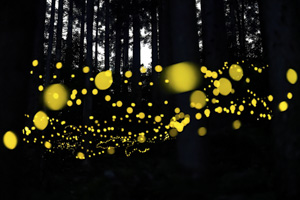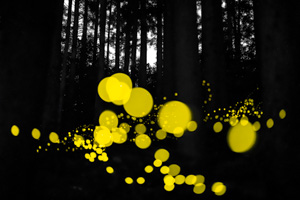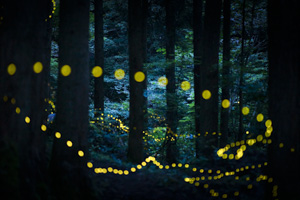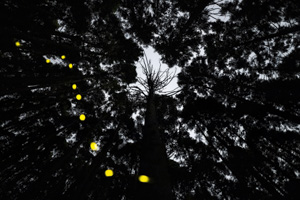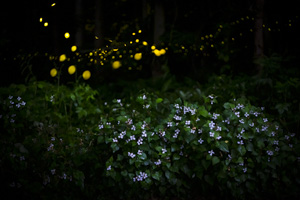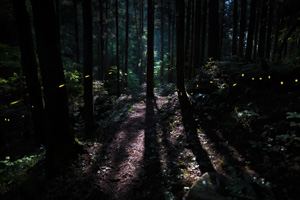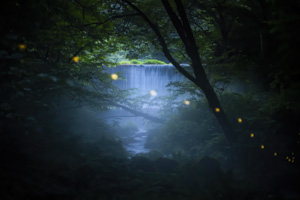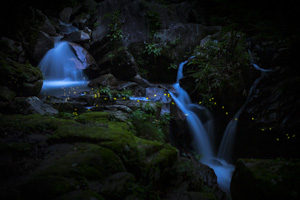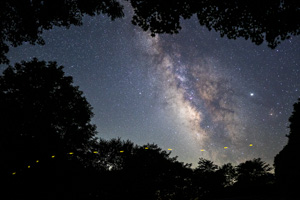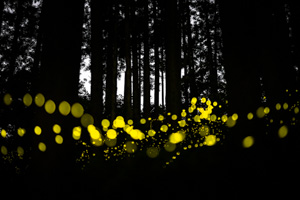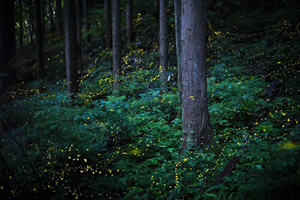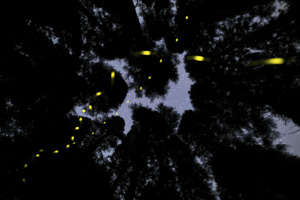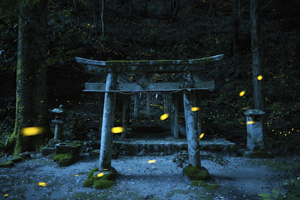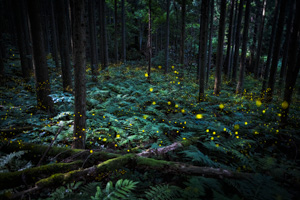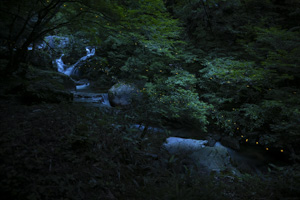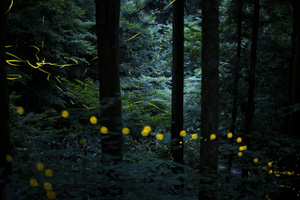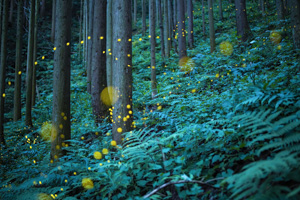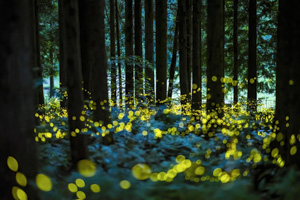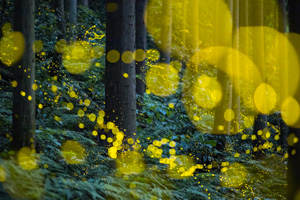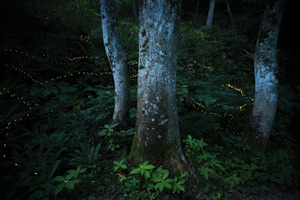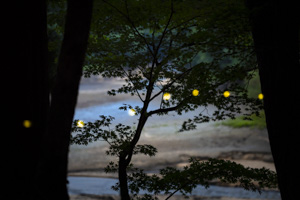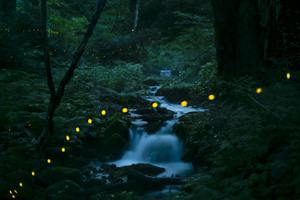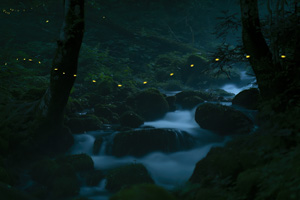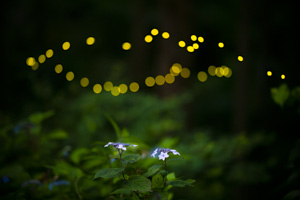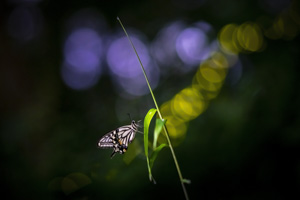Himebotaru
[AWARD] Sony World Photography Awards 2020 Professional “Natural World and Wildlife” 2nd place
[AWARD] LensCulture Critics‘ Choice 2023 winner (Selected by Darius Himes, International Head of Photography at the auction house Christie's.)
[AWARD] Nature Conservancy's 2022 Global Photo Contest Wildlife Honorable Mention
"himebotaru" is a small firefly with a body length of only 6 to 8 mm. That light is just a flash. Its body emits an unimaginably strong light for just a moment. himebotaru lives in forests rather than rivers, so its existence was largely unknown even though it lives throughout Japan. I didn't even know about the existence of these fireflies, which live in the forest just 100 meters from my home, until I was 50 years old. The way they dance wildly in the pitch darkness is truly mystical. I was really surprised when I saw it for the first time, and since then, photographing himebotaru has become my life's work.
It is very difficult to count living things in a certain place, but it is very easy to count the fireflies that glow as they fly at night. That's why fireflies are a barometer of rich nature and biodiversity. Female himebotaru cannot fly, so if a large road is built in their habitat, they will become extinct. This is caused by ``the fact that their existence is not known.'' For this reason, I have been researching and photographing the habitat of Himebotaru every night for two months from June to July for over 10 years. I believe that if people knew about the beautiful sight of dancing princess fireflies, they would be able to protect them.
Photographing himebotaru is difficult because the princess fireflies do not fly until it is completely dark, so the common method was to photograph the background while it was still bright and then synthesize the light from the princess fireflies into a comparatively bright image. I used to take pictures that way, but 8 years ago I started taking single shots by adjusting the ISO sensitivity and exposure time.
Himebotaru's light is the "light of life". It is a courtship light that takes its life as an adult for just one week. There is the beauty of the ``momentary moment'' and ``the awareness of things,'' but above all, there is the ``mystery of nature.'' There are few things a photographer can do when taking a photo, and himebotaru's photos are "landscapes drawn by himebotaru."
姫蛍は体長わずか6~8mmの小さな蛍です。その光はまさに閃光。その体からは想像もできないほど強い光をほんの一瞬だけ放ちます。姫蛍は川ではなく森に生息するため、日本中に生息しながらも、その存在はほとんど知られていませんでした。私も自宅からわずか100mの森で暮らすこの蛍の存在を、50歳になるまで知らなかったのです。真っ暗な中でフワフワと乱舞する様子は、まさに神秘的。初めて見たときは本当に驚き、それ以来、姫蛍の撮影は私のライフワークになりました。
ある場所にいる生物を数えるのはとても難しいですが、夜に飛びながら光る蛍を数えるのはとても簡単です。だから蛍は豊かな自然と生物多様性のバロメーターなのです。姫蛍のメスは飛べないので、生息地に大きな道路ができてしまうと絶滅してしまいます。それは「彼らの存在が知られていない事」によって引き起こされるのです。その為私は10年以上、6月から7月の2か月間は毎晩ヒメボタルの生息地を調査し撮影しています。姫蛍が舞う美しい光景を人々が知ることになれば、姫蛍を守れると思うからです。
姫蛍の撮影は、姫蛍が真っ暗にならないと飛ばない為に難しく、明るいうちに背景を撮影して姫蛍の光を比較明合成する方法が一般的でした。私も以前はその方法で撮影していましたが、8年前からISO感度と露光時間の工夫などで一枚撮りで撮影するようにしています。
姫蛍の光は「命の灯」。成虫となって僅か一週間の命をかけた求愛の光です。そこには「刹那」「もののあはれ」の美がありますが、何より「自然の神秘」がそこにあります。写真を撮るに当たって写真家が出来る事は少なく、姫蛍の写真は「姫蛍が描いた風景」なのです。

